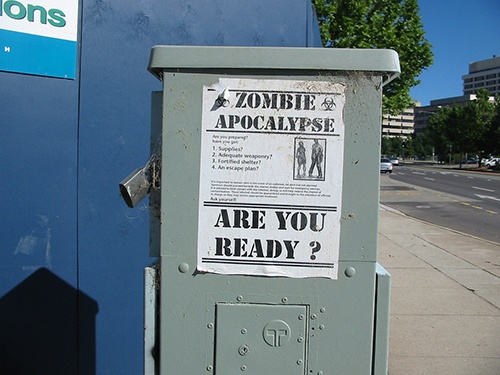
Improving your score on the SAT isn’t always easy, but it might be a little easier than you think if you use these tips! They're not necessarily magical, but here are 15 tips and tricks for different sections of the SAT to help you improve your scores with minimal extra study time.
Writing
Tip #1: Choose Succinct Answers
The most concise answer choice is usually the correct answer to most SAT Writing questions that ask you to revise a portion of a sentence. High quality writing doesn't use unnecessary extra words that could make the statement unclear.
Tip #2: Tread Carefully with “NO CHANGE” Answers
Most questions on SAT Writing give you the option of choosing “NO CHANGE” as an answer. This can be a very dangerous choice if you’re shaky on grammar rules. If you don’t see any errors in the sentence right off the bat, you will probably be tempted to choose “NO CHANGE”.
Double check yourself before you do this! If you notice that more than one in four questions seem to be “NO CHANGE”, then you might be missing something. Reread the other possibilities to yourself, and make sure you’re not overlooking any grammar errors.
Essay
Tip #3: It's Not About You
The SAT Essay is all about analyzing another person's argument. Don't start giving your opinion on the topic or letting your perspective creep too much into your writing. Focus solely on how the author builds his or her argument. It's best to come up with three different techniques the author uses that are supported by concrete evidence. Then, structure your essay around describing those techniques. Write at least two pages to ensure that your essay thoroughly covers all the relevant points.
Tip #4: Write an Intro with a Clear Thesis and a Conclusion
When a grader looks at your essay, the first thing they want to see is that you’ve answered the prompt clearly and logically. This is why it’s so important that you write an introduction in which you spell out your thesis and outline how your essay will be structured. This will show the graders that you are capable of organizing your thoughts and know how to write effectively.
You should also be sure to write a conclusion to wrap up all the points you made in your essay. Once again, this shows that you are able to organize your thoughts and bring your examples together to formulate a coherent opinion. The first and last paragraphs of your essay are disproportionately important to graders, so you should always devote a good chunk of your time to making them awesome.
 Everything is awesome! Especially your introduction and conclusion on your SAT essay! Am I right? Wait please don't leave...
Everything is awesome! Especially your introduction and conclusion on your SAT essay! Am I right? Wait please don't leave...
Reading
Tip #5: Skim Passages
This tip applies to most people. If you’re a very fast and thorough reader, you might be able to read passages closely without a problem. If you struggle with time pressure, however, I would recommend skimming the passages instead. You’ll save time and shouldn’t have much more difficulty answering the questions if you skim strategically.
An effective skimming strategy is to read the introduction and conclusion paragraphs of the passage and the first and last sentences of every paragraph.You should be able to get a good sense of the main points of the passage and answer any big picture questions you come across after skimming this way. When you get to detail questions, you can go back and read specific parts of the passage closely on a question-by-question basis.
Tip #6: Read Passage Introductions
Many students are tempted to skip the little blurbs before SAT reading passages because they don’t seem important. This is a mistake! They can help you by providing context for the information in the passage.
Often, these blurbs will tell you the setting, the name of the main character, or key details about when it was written and for what purpose. This can be extremely helpful when you’re trying to get your bearings on new reading material. Especially if you plan on skimming the passage or skipping straight to the questions, you should always read the italics!
Tip #7: Use Process of Elimination
This applies to all sections of the SAT, but I find that it’s especially important on the Reading section. This section has many questions that can be mistakenly interpreted to be subjective, so they choose an answer that they should have eliminated.
The only correct answers are the answers that are supported by direct evidence in the passage or the sentence you’re referencing. All other answers will have something definitively wrong with them.
In using process of elimination, you'll learn to be very picky about what constitutes an accurate answer, which is the secret to beating the test. See my article on the fundamental strategy of SAT Reading for a more in-depth look at how this works!
Tip #8: Find the Evidence Questions Are Your Friends
Find the evidence questions can help you detect incorrect answers and understand the reasoning behind correct answers. These types of questions refer to the previous question you answered, asking you to identify which quote from the passage provides the best evidence for your answer. By reading through the options for find the evidence questions, you can determine whether your answer to the previous question makes sense. Can you form a logical bridge between one of the choices and your previous response? If not, you should reexamine your response to the previous question in conjunction with the evidence options.
Math
Tip #9: Use the Diagrams
On SAT Math questions, specifically geometry-related questions, you're often provided with diagrams that depict the problem you’re expected to solve. These diagrams aren't just there for show. You can use them to make logical deductions about which answers make sense and which don’t. Paying attention to what you see in a diagram might allow you to eliminate a couple of answer choices without even doing any calculations.
Tip #10: Underline Your Goal
A major pitfall for students on SAT Math is that they solve for the wrong values. This is a frustrating mistake to make, but it’s easily fixable.
If you come across a question that includes multiple variables or dimensions, underline what it is that you need to solve for so you don’t get lost in your calculations. The SAT loves to provide wrong answers that students might pick if they only get halfway through their calculations or accidentally solve for a different variable. Don’t fall for them!
Tip #11: Plug in Answer Choices
Plugging in answer choices is a key strategy in the Math section. If you’re not sure whether your answer to a question is correct, plug it in and see if it works. It's the easiest and most foolproof way to check your responses.
You can also use this method to solve problems if you have time. Just plug in all the possible answer choices, and see which one fits. The advantage of multiple choice is that the correct answer is always right in front of you, even if you’re not sure which one it is yet.
Overall
Tip #12: Skip Tough Questions
If you want to stop running out of time on the SAT, you need to learn to skip questions that are taking up too much of your time. How much time is too much? It depends on the section.
- Reading: <45 seconds
- Writing: <30 seconds
- Math: <60 seconds
If you find yourself struggling with a question, move on and come back to it later. You can circle it if you want to make it easier to spot on your second pass through the section. Don't miss out on easier questions later on in the section because you got stuck on one toughie. Skipping a difficult question that you might not have gotten right anyways will damage your score far less than missing a bunch of questions at the end of the section.
Tip #13: Double Check
You should do your best to finish with extra time on every section of the SAT and double check your answers. If you’re even slightly unsure about a question, put a star next to it so that you’ll know to pay special attention to it when you double check your answers at the end.
If you have enough time, double check all of your answers to control for careless mistakes. Even though it's tempting to take a rest at the end of the section, you'll thank yourself later if you find any easily fixable errors.
Tip #14: Bubble at the End
This is something that not many people think to do but is actually very helpful in saving a couple minutes of time per section. Waiting until the end of the section to bubble in all your answers means eliminating the annoying hassle of switching between your test booklet and answer sheet constantly. Circle your answers in the test booklet so you can easily record them on your answer sheet later.
One caveat: Only use this tip if you can consistently finish each section of the SAT with at least two minutes to spare. You don’t want to end up solving all the questions but leaving your answer sheet blank!
Tip #15: DEEP BREATHS
Keeping a cool head on the SAT is essential. Test anxiety can have a severe impact on your scores, and it’s especially easy to fall victim to it if you’re shooting for a high score goal. If you have to skip a question, don’t let it derail you - just keep going.
Answer whatever questions you can, and don’t get distracted by worries about your ultimate scores. Try to stay in the moment. If you don’t do as well as you hoped this time, it’s not the end of the world!
 The end of the world IS coming, though. Don't forget that.
The end of the world IS coming, though. Don't forget that.
Review
Use these 15 tips and tricks to help you quickly boost your score on the SAT!
Writing
1. Choose the Most Succinct Answer
2. Be Careful with “No Error” Answers
Essay
3. Remember: It's Not About You
4. Write an Intro and Conclusion
Reading
5. Skim Passages
6. Read Passage Introductions
7. Use Process of Elimination
8. Find the Evidence Questions Are Your Friends
Math
9. Use the Diagrams
10. Underline Key Points
11. Plug in Answer Choices
Overall
12. Skip Tough Questions
13. Double Check
14. Bubble at the End
15. Take Deep Breaths
Tips won’t get you everywhere, and if you’re looking for big improvements, you should still be studying hard and using more in-depth strategies. The advice in this article is just here to give you the little extra boost you need to reach your full score potential!
What's Next?
Now that you've learned some quick tips for each section of the test, take a look at our more in-depth study stategies for SAT Reading, Writing, and Math.
You should also check out our complete SAT study plan so you can stay on the right track with your test prep!
If your SAT test date is coming up soon, check out this list of the most important last minute strategy guides you need to read to get through the test.
Want to improve your SAT score by 160 points?
Check out our best-in-class online SAT prep classes. We guarantee your money back if you don't improve your SAT score by 160 points or more.
Our classes are entirely online, and they're taught by SAT experts. If you liked this article, you'll love our classes. Along with expert-led classes, you'll get personalized homework with thousands of practice problems organized by individual skills so you learn most effectively. We'll also give you a step-by-step, custom program to follow so you'll never be confused about what to study next.
Try it risk-free today:
Have friends who also need help with test prep? Share this article!

Samantha is a blog content writer for PrepScholar. Her goal is to help students adopt a less stressful view of standardized testing and other academic challenges through her articles. Samantha is also passionate about art and graduated with honors from Dartmouth College as a Studio Art major in 2014. In high school, she earned a 2400 on the SAT, 5's on all seven of her AP tests, and was named a National Merit Scholar.


































 Holly R.
Holly R.